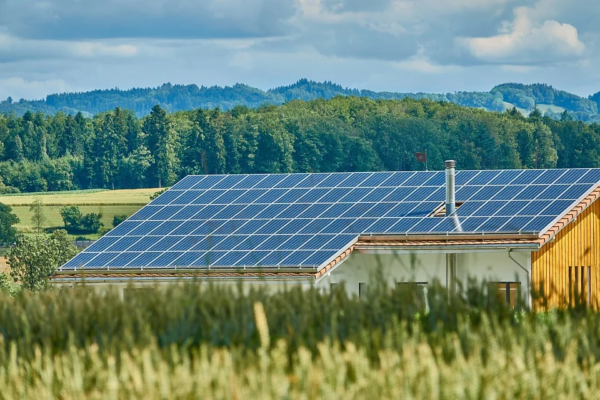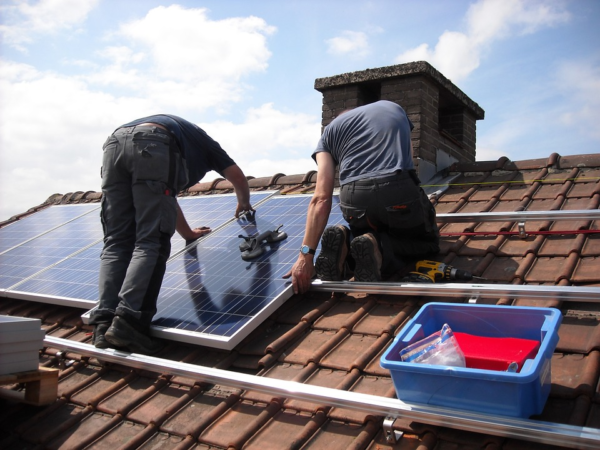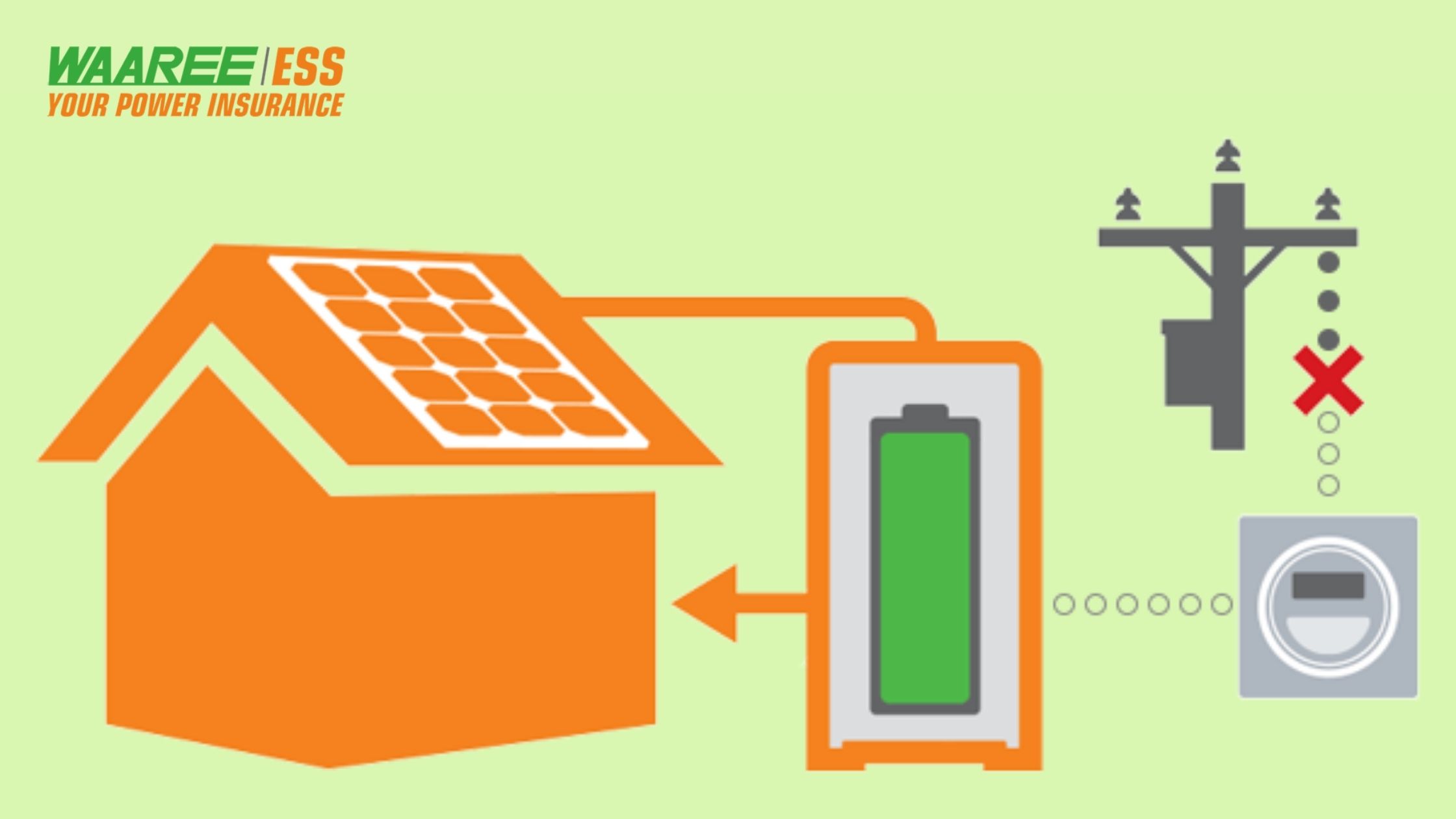Adding solar panels to an existing system can be difficult as it is a complicated process. The most expensive part of a solar system is the battery. The main function of batteries is to maintain and store power generated by the panels.
With increasing blackouts, solar owners have decided to add battery backup to their solar systems to keep the lights on during grid outages. The grid-tied solar power system is also known as a hybrid solar system. This solar power system provides solar power as the primary electricity source and sells the excess power to the utility.
As a customer, it is essential to maintain and be aware of the nitty-gritty of grid outages. Solar panels should not back feed power to the grid when repairs begin. It is crucial to know how to integrate batteries into an existing grid-tied solar system.

Source: Pixabay
If regular blackouts are frustrating you, then you need to find a battery backup for your solar system, Waaree is the right place for your solution. The cost of setting up a battery backup is less upfront. Adding a battery to the solar system is convenient as there will be fewer obstacles to the existing system size. This blog explains how equipping a battery to an existing grid-tied solar system works specifics.
How to Equip a Grid-tied Solar System with Battery Backup
There are several approaches to creating grid tied solar systems with battery backup. Below are three ways of adding solar panels to an existing system:
- AC Coupling
- DC Coupling
- Replace grid-tie inverter with storage-ready inverter
Let’s discuss these approaches in detail to understand how to add batteries to solar systems and their implementation.

Source: Pixabay
Method #1: AC Coupling
The grid-tie inverter is coupled with an off-grid and battery in an AC paired system. The grid-tie inverter with battery backup constantly runs as the off-grid inverter acts as a secondary power source. Outback radian is one of the best choices for AC coupling. It is the newest firmware that supports frequency shift. This feature is why the off-grid inverter shifts its frequency to control the result of the grid-tied inverter.
The configuration of AC coupling includes the addition of the battery-based inverter and the battery bank to the grid-tie solar system and the critical load panels. As the output of both the inverters is on the same bus, the energy result couples. AC coupling is a fail-safe method when your grid-tie solar panel produces excess energy, and you need to use the grid-tie inverter with battery backup.
Also Read About “Is There Enough Lithium to Maintain the Growth of the Lithium-Ion Battery Market?”
Pros & Cons of AC Coupling
Why choose AC coupling?
Here are the pros AC Coupling can offer:
- Easy to implement.
- The battery bank connects back to Radian.
- The existing grid-tied inverter does not need to be replaced.
- Works perfectly with a micro-inverter system.
- It offers compatibility with the most available grid-tied solar systems.
Are there any drawbacks of AC coupling?
AC coupling can offer a wide range of support as per your requirement. If you need to add a battery to the solar system, understanding the limitations of AC coupling is essential.
- Due to strict guidelines for a grid-tie inverter with battery backup, the process of sizing is an issue.
- The system works poorly when batteries or inverters are undersized.
- Very expensive if an existing grid-tied system is large.
Method #2: DC Coupling
The solar system is directly connected to the battery backup using a charge controller in a DC-coupled system. Off-grid systems work in a DC-coupled system. A string inverter using 600 volts can use a DC coupling system. A manual switch is used in switching between grid-tie and off-grid modes. This switch needs to be physically switched on to charge the batteries. A manual presence on the site is because DC coupling charges the battery inverter, but the PV array may not charge the battery until you turn them on.
Pros & Cons of DC Coupling
Why choose DC Coupling?
- Works on a broader range compared to AC coupling.
- Works perfectly with string inverters of 600-Volts
Learn More About “How Can You Improve The Performance And Life Of Lithium-Ion Batteries?”
Are there any drawbacks of DC Coupling?
- The switch needs to be manually switched on to charge the batteries.
- Requires attention and maintenance.
Replace grid-tie inverter with storage-ready inverter
One of the last options you could try is replacing your grid-tied inverter with a storage ready inverter. This method will allow you to have a reliable battery backup as it is compatible with all grid-tie systems. However, its downside is that it will be an expensive investment.
Storage ready inverters are more compatible with the standard system sizes. They offer features to maximize the net meter policy of the solar system by taking advantage of the peak time-of-use (TOU) periods via storage and selling of energy. Apart from this, replacements for batteries are made via gas generators.
However, gas generators offer more cons than pros, such as having high maintenance needs, being less environment friendly, requiring a fuel source, and being loud. We recommend using either AC or DC coupling for your grid-tied solar power systems as battery backups.
Solar farming can consume an investor’s efforts and time both. Maintenance, operation, and repairing of solar panels can be tricky if not done right. As an investor, you will have to find the right results based on the equipment and systems options and the energy storage approach you adopt. Operations involve the refitting of battery systems to your existing grid-tied system. Professionals must handle such operations as. Otherwise, they can cause serious repercussions to your entire system’s design and components.
Waaree Group’s division WESS has been the industry leader in everything related to energy storage systems. Consult a trusted, reputed, and safe partner like Waaree. It has been around since 1989 and stands as the industry’s topmost solar system and its energy storage.
To contact them you can reach out for appointments and consultations by clicking this link.
Read Further: Are Lithium-Ion Batteries Compatible With a Sustainable Future?



Leave A Comment
You must be logged in to post a comment.